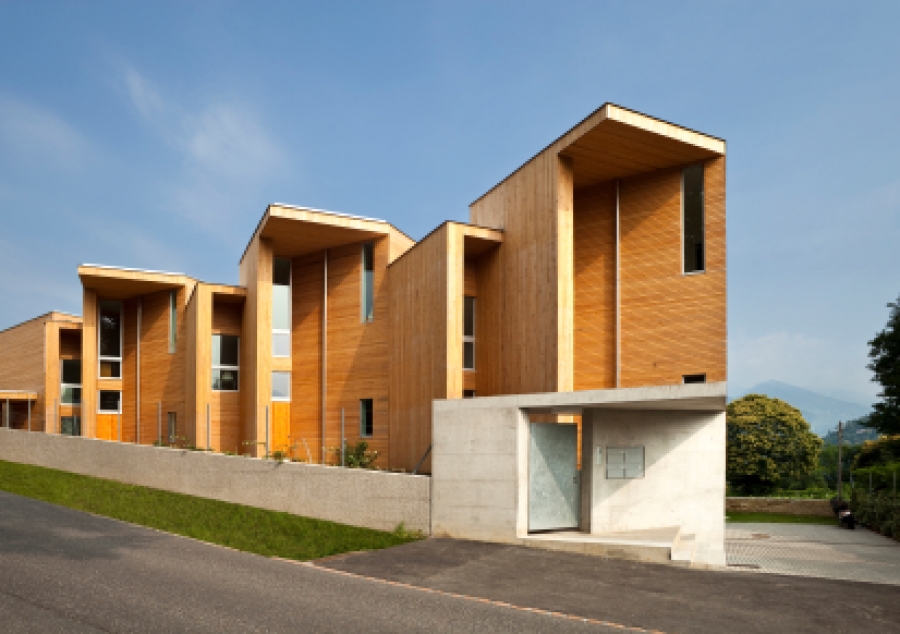LEEDfor Homes vs. National Green Building Standard
More homeowners are choosing to build green, but how can homeowners can be assured of the quality of the final product? One of the best ways is to gain certification from a third-party rating system. Two of the most popular areLEED为家庭和国家绿色建筑标准。虽然大致相同,这两个系统有一些显著的差异。

By far, the most popular green rating system in the United States is LEED for Homes, the system that the美国绿色建筑委员会(USGBC) designed specifically for new residential development. It focuses on single-family detached homes but contains provisions for neighborhood developments. The National Green Building Standard (NGBS) is a collaborative effort of the住宅建筑商协会(NAHB) and theInternational Code Council(ICC). The NGBS also underwent the rigorous process of becoming approved by the American National Standards Institute (ANSI) and is the only residential green building rating system thus approved. In addition to single-family, new home construction, the NGBS has specific paths for multi-unit buildings, additions, and renovations.
Similarities
The basic structure of both systems is similar. Each categorizes specific areas of green building, such as site, water conservation, energy conservation, building materials, indoor air quality, etc. Each category lists certain requirements that must be met to achieve any level of certification. These requirements are generally not much more stringent than the building code. Optional green strategies are counted as points, and each point is achieved by adhering to certain conditions that are laid out in a checklist. Finished projects are classified at certain levels of certification according to how many points they achieved.
在第三方认证的差异
 也许这两个系统就在于之间最显著的差异第三方认证和测试要求。虽然这两个系统需要第三方认证的一定程度上,LEED为家庭在这方面更加严格。LEED为家庭既需要为家庭提供LEED和绿色评价者对每一个项目。除了做初步的(施工前)和最终的认证审查每个项目,供应商协调绿色评价者,招聘和登记项目,并负责质量保证。谁决定建立一个通过LEED认证的家庭房主应该先找到并与供应商的合同。截至2011年2月,共有132Providers列出的美国绿色建筑委员会网站上。绿色评价者可以在与供应商或分包商的工作人员。绿色评估人进行现场检查和测试。为LEED项目绿色评价者必须进行测试,并通过美国绿色建筑委员会的认证。对于住宅项目的典型LEED将经历:
也许这两个系统就在于之间最显著的差异第三方认证和测试要求。虽然这两个系统需要第三方认证的一定程度上,LEED为家庭在这方面更加严格。LEED为家庭既需要为家庭提供LEED和绿色评价者对每一个项目。除了做初步的(施工前)和最终的认证审查每个项目,供应商协调绿色评价者,招聘和登记项目,并负责质量保证。谁决定建立一个通过LEED认证的家庭房主应该先找到并与供应商的合同。截至2011年2月,共有132Providers列出的美国绿色建筑委员会网站上。绿色评价者可以在与供应商或分包商的工作人员。绿色评估人进行现场检查和测试。为LEED项目绿色评价者必须进行测试,并通过美国绿色建筑委员会的认证。对于住宅项目的典型LEED将经历:
- 初步认证和审查的供应商(之前的设计定稿)
- 由绿色评价者的初步检查(通常只是之前石膏板安装),
- 最后检查,并通过绿色评价者测试,
- 最终认证的供应商。
Under the NGBS, third-party verification depends somewhat on the homeowner’s decision to follow a performance path or a prescriptive path under the energy-efficiency category. The performance path consists of inspections and testing similar to the U.S. EPA’s Energy Star program. (Energy Star approval earns an automatic Bronze certification under the Energy Efficiency category.) Electing to follow the prescriptive path may require the testing or inspecting of individual components. For example, the绝缘installation may need to be graded. Testing is performed byNAHB批准的核查员. As of February 2011, tthe NAHB listed more than 300 Verifiers nationwide. The Verifier should also be hired prior to construction, because the Verifier will need to inspect the preliminary certification checklist, which outlines the project’s certification goals. A typical NGBS project will undergo the following third-party verifications:
- 通过验证的初步清单审核,
- 通过验证粗糙检查,
- 根据需要(如果应用指定了规定的路径)单个部件的检查,
- Final testing and inspections,and
- Certification review by the NAHB Research Center.
Both systems have been developed by high-quality, reputable sources. LEED is probably the more recognized by homeowners and therefore more marketable, but the NGBS is often less expensive to implement. In the end, the homeowner must choose and will find an in-depth study of both systems worthwhile before committing to either.

罗伯特·希勒
罗伯特·希勒W.是美国建筑师协会的注册建筑师和成员。他拥有建筑学学士程度从肯特州立大学,拥有数学未成年人。他是LEED认证的专业和绿色认证专家(住宅建筑商协会)。他拥有超过13年的建设和设计领域的经验,用5年的一个商业开发工作经验。绿色建筑及装修是一种激情,他已经有好几年了,他做了广泛的研究课题。他对自己的百年家居大规模的翻修过程中也磨练了他的DIY技能。
网站:www.rwsarchitect.com/
